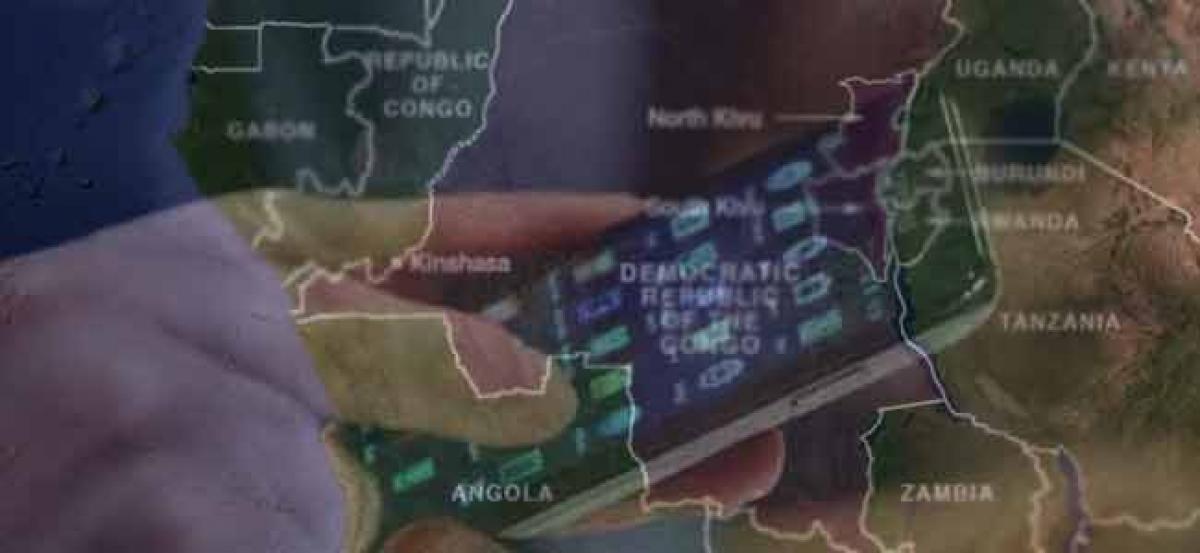Live
- COP29 off to a good start, agrees on carbon market
- ANGRAU signs MoU with CABI
- Chaitanya Donates Rs. 2 Crore Golden Vijayanthi Necklace to Sriveera for Utsavamurti
- Workshop held on immunisation
- Rethinking Hospitality: The Need for Period Products in Luxury Hotels
- Over half of Australian species decline following 2019-20 megafires: report
- APSRTC bus hits stationary bus, driver, passengers hurt
- Trump and Biden Discuss Israel-Gaza Conflict in White House Meeting Amid Hostage Crisis
- AP students bag gold medals in archery
- India Creates History: Breaking Records in T20 Cricket Against South Africa
Just In

A militia group blamed for atrocities in Congo is largely composed of children, while a militia formed to defeat it is suspected of a campaign of ethnically based massacres and rapes, U.N. investigators said on Friday.
GENEVA: A militia group blamed for atrocities in Congo is largely composed of children, while a militia formed to defeat it is suspected of a campaign of ethnically based massacres and rapes, U.N. investigators said on Friday.
The report, detailing violence that the United Nations said may amount to crimes against humanity, shines a light onto the role of children and witchcraft in a conflict that has killed thousands.
It was based on testimonies from refugees who had fled from the violence in Democratic Republic of Congo to Angola.
"Their accounts should serve as a grave warning to the government of the DRC to act now to prevent such violence from tipping into wider ethnic cleansing." U.N. High Commissioner for Human Rights Zeid Ra'ad al-Hussein said in a statement.
The investigation, which was "triggered because the response of government fell short", documented 251 killings over a three-month period in an area that covers only a fraction of the 59,000 square mile (152,800 sq km) diamond-rich Kasai region.
One militia group, the Kamuina Nsapu, has been fighting Congo's government for a year, and has summarily executed at least 79 people, the U.N. report said.
"A great majority of the Kamuina Nsapu elements are children (girls and boys), some as young as seven," it said.
The refugees were convinced that the Kamuina Nsapu had magical powers, and militia members believed their magic -- including young girls drinking the blood of decapitated victims -- would make them invincible, the report said.
"This generalised belief about the powers of Kamuina Nsapu and the fear it triggers among segments of the population in the Kasais may partly explain why a poorly-armed militia, composed to a large extent of children, has been able to resist offensives by a trained national army for over a year."
There were no corroborated cases of Kamuina Nsapu committing large-scale killings based on ethnic identity, the report said. Typically its members would execute a government official and decapitate them, removing the head to put it in "sacred fire".
A second militia group, the Bana Mura, was formed in March or April, allegedly armed and supported by local leaders and officials from the army and the police, to attack the Luba and Lulua ethnic groups, to which Kamuina Nsapu fighters belong.
"While the Kamuina Nsapu are reported to have conducted targeted killings -- mostly of State agents and individuals suspected of practicing sorcery -- since April 2017, the Bana Mura allegedly undertook a campaign aimed at eliminating the entire Luba and Lulua populations in the villages they attacked," the report said.
Scott Campbell, head of Central and West Africa at the U.N. human rights office, said the violence had spiralled out of control with the complicity of the government of President Joseph Kabila, whose mandate expired last December, and the U.N. was concerned it could be used to delay a fresh election.
Congo's government denies any systematic use of excessive force and says that recent prosecutions show its justice system's ability to deal with crimes committed during the conflict.
The U.N. report said the Bana Mura were often accompanied by Congolese soldiers, who were responsible for atrocities including firing rockets into a church in the village of Djiboko on 10 June, killing 60-90 people attending a religious service.
In one attack on a village, the Bana Mura shot, chopped up and disembowelled people. Many were beheaded or burned alive, including the patients in a health centre, the report said.
A woman still bleeding from childbirth was raped with the barrel of a rifle.
After a Bana Mura attack on another village, one witness claimed to have buried 45 decapitated bodies, the report said.
"Some elements of the Bana Mura militia were reportedly chosen and used by State agents for their alleged magical powers in order to neutralise the sorcery used by the Kamuina Nsapu," the U.N. report said.
The United Nations has identified 80 mass graves in the Kasais region.

© 2024 Hyderabad Media House Limited/The Hans India. All rights reserved. Powered by hocalwire.com







